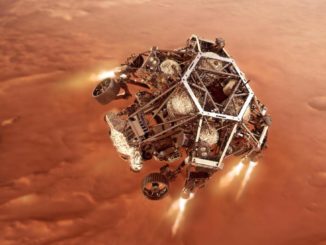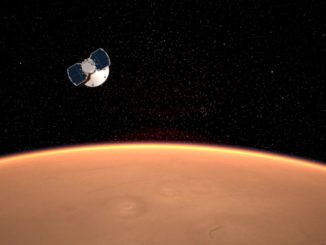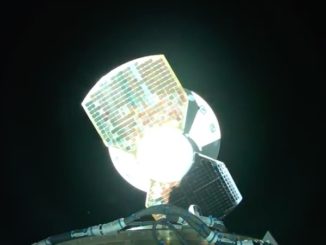STORY WRITTEN FOR CBS NEWS & USED WITH PERMISSION
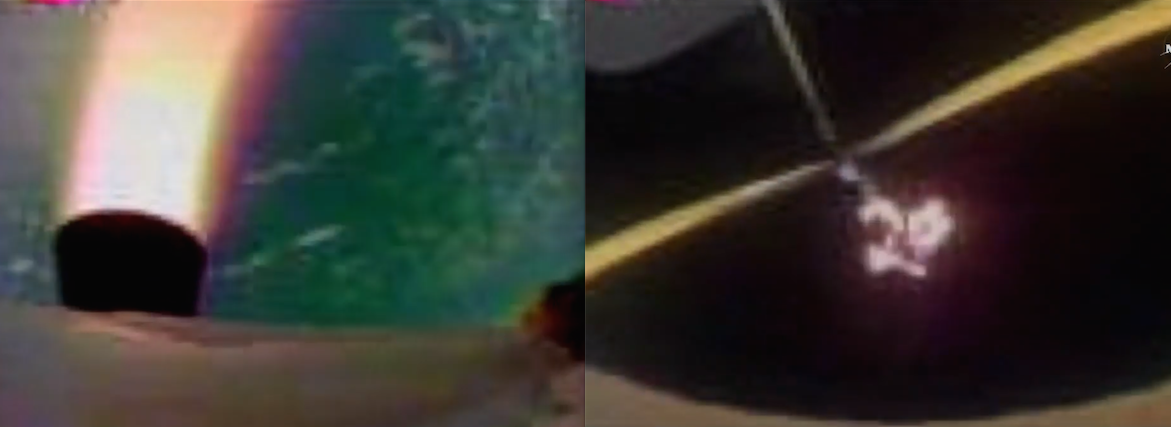
Flying more than twice the speed of sound in the thin air 34 miles above Hawaii, a flying saucer-shaped test vehicle successfully inflated a doughnut-like airbrake, technology needed to slow heavy payloads down during descent to Mars, but a huge supersonic parachute ripped apart seconds after release in the $230 million program’s second straight failure.
“First off, it looked like our rockets fired correctly, it looks like we got up to the altitude and the speed we were looking for,” said Daniel Coatta, a mechanical engineer at NASA’s Jet Propulsion Laboratory in Pasadena, Calif. “The (airbrake) inflated, it looked like it performed great.”
But the 100-foot-wide parachute appeared to rip apart as it tried to inflate in the supersonic airstream, triggering audible groans of disappointment from the flight control team. The test vehicle then descended on its own to a splashdown in the Pacific Ocean west of Hawaii.
The low-resolution real-time video feed did not have the clarity to show exactly what went wrong, but engineers hope to recover high-resolution video and data from the test vehicle after it is retrieved and hauled back to shore.
This was the second of three planned test flights in an ambitious program to perfect technologies needed for decelerating heavy spacecraft descending to the surface of Mars in the thin atmosphere of the red planet.
The third flight is tentatively planned for next summer, using a larger version of the test vehicle. How the latest parachute failure might play into those plans will depend on the results of a detailed analysis of video and telemetry and development of yet another parachute design better able to cope with the shock of inflation.
The Low-Density Supersonic Decelerator test vehicle got off the ground at 1:45 p.m. EDT (GMT-4), kicking off a slow climb to the edge of space from the U.S. Navy’s Pacific Missile Range Facility on Kauai, Hawaii.
Using a high-altitude balloon loaded with 34 million cubic feet of helium for the lift out of the dense lower atmosphere, the LDSD vehicle reached an altitude of 120,000 feet, about 22.7 miles above the Pacific Ocean, three hours after launch.
After confirming the vehicle’s health, the 7,000-pound LDSD test craft was released at 5:35 p.m., followed an instant later by ignition of a Star 48 solid-fuel rocket motor. Burning for about 71 seconds, the rocket motor boosted the craft to an altitude of about 180,000 feet, or 34 miles.
At that altitude, traveling at a velocity of about four times the speed of sound, the craft was able to experience aerodynamic conditions similar to what a Mars lander would encounter during a descent to the red planet’s surface.
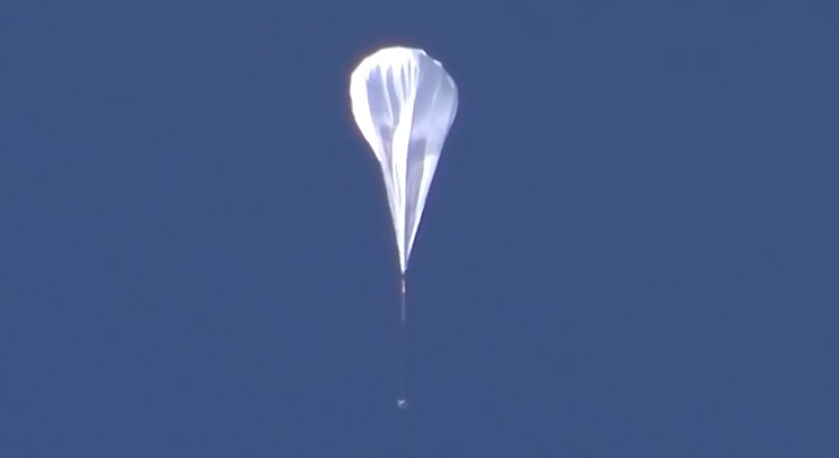
The heaviest spacecraft ever sent to the surface of Mars, NASA’s Curiosity rover, had a landing weight of about one ton. To get heavier robots to the surface, and eventual crewed spacecraft that could weigh 20 tons or more, NASA must develop better braking systems to help slow incoming spacecraft and to permit landings at higher elevations.
The Low-Density Supersonic Decelerator features two new technologies to do just that.
The first is an inflatable Kevlar torus around the perimeter of a traditional heat shield, known as the Supersonic Inflatable Aerodynamic Decelerator, or SIAD, that gives the test vehicle the general shape of a flying saucer. Once inflated, the SIAD increased the cross section of the spacecraft from 15 feet 5 inches to about 20 feet across, increasing atmospheric drag.
The second new technology is a huge 100-foot-wide “ringsail” parachute, the largest ever designed to deploy at more than twice the speed of sound.
Dramatic video from on-board cameras showed the test vehicle, spinning for stability, against the limb of the Earth with a rushing jet of fiery exhaust from the booster motor.
After the rocket motor boosted the test vehicle to a velocity of about Mach 4, the craft slowed on its own to around Mach 3. At that point, the SIAD inflated in less than a second, slowing the craft down to around Mach 2.4. The 100-foot-wide parachute deployed a few moments later.
During the program’s initial test flight last year, the SIAD worked flawlessly but the parachute ripped apart in the supersonic airflow. Studying high-resolution video of the inflation process, “we saw things that we had never seen or imagined before,” said Ian Clark, the LDSD principal investigator at NASA’s Jet Propulsion Laboratory.
“We saw a much more dynamic and much more turbulent parachute inflation than we had ever known,” he said. “We saw things like the suspension lines exploding like lightning and moving in a chaotic manner all over the place.”
After a detailed analysis of the data, engineers have “a much better understanding of the physical processes that govern and dominate how these parachutes behave under these 2,000-mph winds,” Clark said.
“We have made a number of improvements to our parachute,” he told report before launch. “We’ve got more curvature to the geometry that helps reduce stresses early on in the inflation process, we’ve added a lot more structural high-strength material in the crown of the parachute, throughout the parachute, to make it more robust through a lot of the dynamics we saw in the inflation process.”
The resulting parachute is “a much stronger, more robust parachute that we think is going to provide us with another tremendous data set for us.”
But to the untrained eye, the redesigned parachute appeared to fare no better than its predecessor. On-board cameras showed the parachute coming apart almost from the moment it began to inflate. But it was not clear from the low-resolution video whether some other factor could have played a role.
It’s not yet known when the technology might be used on an actual flight to Mars, but Clark told reporters before the first flight last year that it will definitely be needed at some point.
“Landing on Mars is an extremely challenging thing to do,” he said. “The atmosphere is extremely thin, it’s about 1 percent the density of Earth’s atmosphere. That means you need very large devices to react against the atmosphere to create the drag that we use to slow the vehicles down as they enter the atmosphere.
“If you want to land things that are even heavier than the Mars Science Laboratory, if you want to land several tons — and as you cast your eyes to the horizon and you think about landing humans on the surface of Mars, missions that will be 10 to 15 tons, 20 tons or more — you’re going to need extremely large drag devices to slow those vehicles down. We don’t have those currently, and that’s what LDSD is developing.”
A larger test craft, with an inflated diameter of 26 feet, is scheduled for launch next year. How today’s parachute failure might play into those plays is not yet known.

